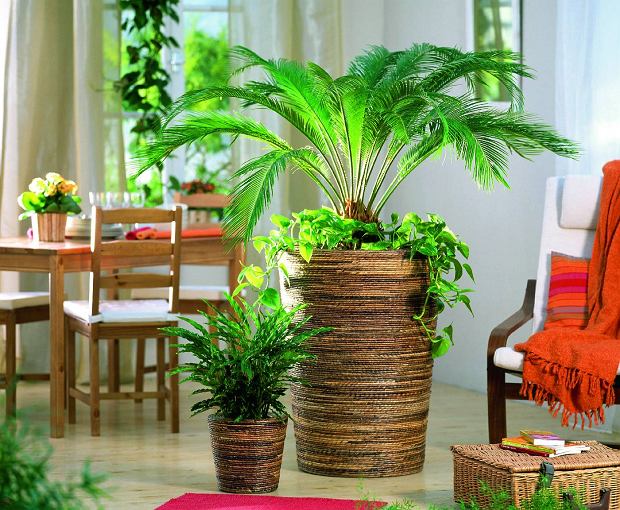 The temperature influences the growth of the plants just as much as the light. These two environmental factors are closely related, because when it hits plants or other objects, some of the light rays are converted into heat rays. The usual window glass is well permeable for the rays of light, where only a small part of the converted thermal radiation is released back into the open air. This causes the interior spaces to heat up when exposed to sunlight. This operation can be done in any room- and observe plant windows.
The temperature influences the growth of the plants just as much as the light. These two environmental factors are closely related, because when it hits plants or other objects, some of the light rays are converted into heat rays. The usual window glass is well permeable for the rays of light, where only a small part of the converted thermal radiation is released back into the open air. This causes the interior spaces to heat up when exposed to sunlight. This operation can be done in any room- and observe plant windows.
An essential prerequisite for our indoor plants to thrive is the complementary interaction of light and temperature.
In general, the temperatures should be a few degrees higher when exposed to intense light than when there is little light. That's what you have to do in winter, when the sun gives little light, keep plants cooler than during the summer months, in which there is a significantly greater amount of light with a longer exposure time. In rooms, which are artificially heated by heating during the dark winter months, it is therefore necessary to ensure that the indoor plants are as bright as possible. If the temperatures are too high, they lack the necessary light, then they get "horny" and often take on an ugly shape. The demands of the plants on the temperatures, which they need for the normal course of their life processes, are different for the different species. Each plant age requires a certain temperature range, not over that- or may be undercut, otherwise damage will occur. Knowing these lower and upper temperature limits is of great importance for their sensible care.
In horticulture, ornamental plants are divided into “cold house” plants according to their temperature requirements during cultivation. (8 to 12 °C), of the “Tempered House” (12 to 18 °C) and the "warm house" (18 to 25 °C) usual. These temperature specifications correspond to the optimum temperature, that in the growing season – i.e. in the state of highest growth intensity – affects the plants, so that they can develop in accordance with their characteristic stature and all other characteristics appropriate to the species. Of course, the other growth factors must also be optimally designed.
The demands of the various plants on the temperatures required for growth and development are natural in the climatic conditions, home location justified. growths, coming from tropical areas, understandably generally require higher temperatures than such, native to the subtropical or temperate zones. However, experience has shown that many of our indoor plants also thrive at lower or higher temperatures, than their natural location offers. However, they don't grow as luxuriantly. This sometimes makes it possible to use them as room decorations in the first place. Just think of one of our favorite houseplants, the rubber tree (Ficus elästica Roxb.), which at the natural site in East India has a height of 20 to 25 meters reached! But larger sudden temperature fluctuations lead to "cold diseases" in all indoor plants. In addition, the temperature must not fall below a certain minimum (with some plants also not exceed a maximum), otherwise death will occur. So e.g. B. some tropical plants already by temperatures below +10 °C damaged. The growth rhythm of our native plants is primarily determined by the temperature conditions, that change with the seasons: With the increasing temperatures in spring, seed germination begins, budding and flowering. The heat during the summer months promotes shoot growth and leads to the formation of seeds and fruits. Due to the falling temperatures in autumn, growth slows down, and when the annual shoot or other outlasting organs mature, the plants go into winter dormancy.